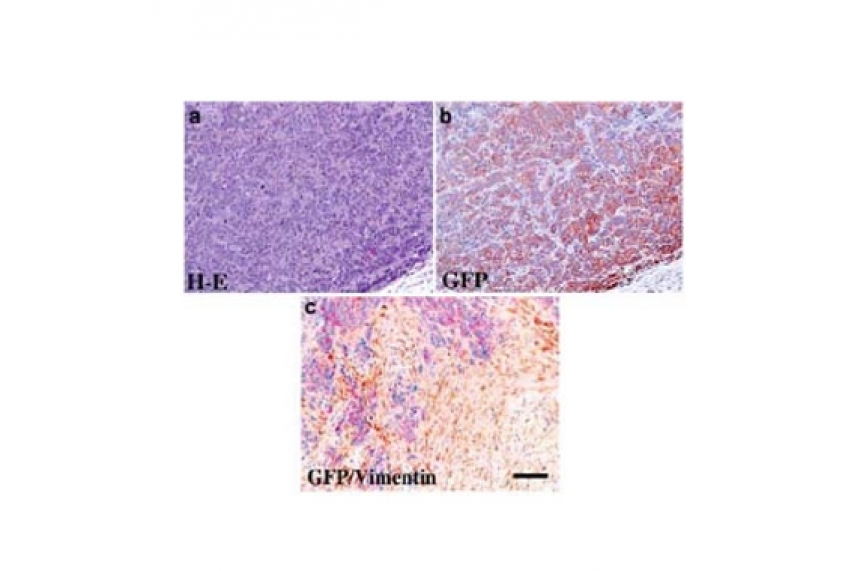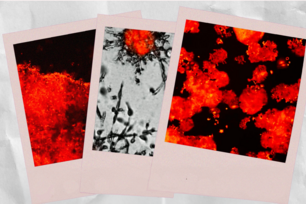Cancer exploits the body's wound-healing process, study finds

Sections of ras tumors co-mingled with carcinoma-associated fibroblasts at 60 days after injection were immunostained using a antibodies.
CAMBRIDGE, Mass. (May 5, 2005) — Scientists have known for the last decade that a link exists between wound healing and cancer. For instance, in a 1994 experiment at the Lawrence Berkeley National Laboratory, chickens infected with a cancer virus developed tumors in areas of their body that had undergone wounding or scarring, while no tumors developed in infected areas that had not suffered wounding. However, the biological mechanism for this process hasn’t been clear.
Now, through studying muscle tissue in breast cancer, scientists in the lab of Whitehead Institute Member Robert Weinberg have discovered the process by which tumors hijack normal wound-healing processes and use them for their own purposes.
Reported in the May 6 issue of the journal Cell, the research began when Akira Orimo, a postdoctoral scientist in Weinberg’s lab, investigated the nature of stromal cells found in breast cancer tumors. Stromal cells form the connective tissue in a mammal’s organs and glands. They also form the connective tissue inside a tumor. Tumors are composed mostly of cancer cells and stromal cells, and researchers have wondered if the stromal cells in tumors function any differently than they do in normal tissues. Do they simply hold the tumor together the same way they hold a pancreas or a liver together, or do they actively work with the cancer cells in promoting the tumor’s growth?
“It turns out the cancer cells are not acting alone,” says Weinberg, who is also a professor of biology at MIT. “These stromal cells play an important role in helping these cells, and therefore tumors, to grow.”
Orimo found that a particular protein produced by the stromal cells and recruited into human breast cancers, called SDF-1, is a key player in helping tumors grow. SDF-1 interacts with a class of cells called endothelial precursor cells. Found primarily in the blood, these cells travel throughout the body and help aid wounded tissue by enabling new blood vessels to form, a process called angiogenesis. They are an integral part of the body’s ability to heal itself.
The stromal cells in the breast cancer tumor produce SDF-1, which in turn persuades these endothelial precursor cells to enter the tumor. Once they do, they help the tumor to form its own robust network of blood vessels, weaving a circulatory system throughout the tumor mass. The tumor can now access the nutrients present in the host’s circulating blood and can then grow unchecked.
“Essentially, these stromal cells opportunistically exploit the normal wound healing process to benefit the tumor,” says Weinberg.
In recent years, scientists have focused on angiogenesis as a target for therapeutics, with some success. “These findings are one part of the larger angiogenesis picture,” says Weinberg. “They lend precision and specificity to that overall scheme.”
Orimo now plans to further investigate this process by disturbing the interactions between the stromal cells and the cancer cells, work that may yield new therapeutic insights.
***
Orimo, A., Gupta, P. B., Sgroi, D. C., Arenzana-Seisdedos, F., Delaunay, T., Naeem, R., . . . Weinberg, R. A. (2005). Stromal Fibroblasts Present in Invasive Human Breast Carcinomas Promote Tumor Growth and Angiogenesis through Elevated SDF-1/CXCL12 Secretion. Cell, 121(3), 335-348. doi:10.1016/j.cell.2005.02.034
Topics
Contact
Communications and Public Affairs
Phone: 617-452-4630
Email: newsroom@wi.mit.edu


